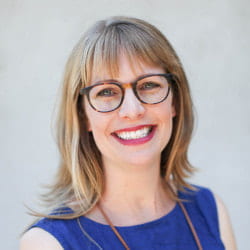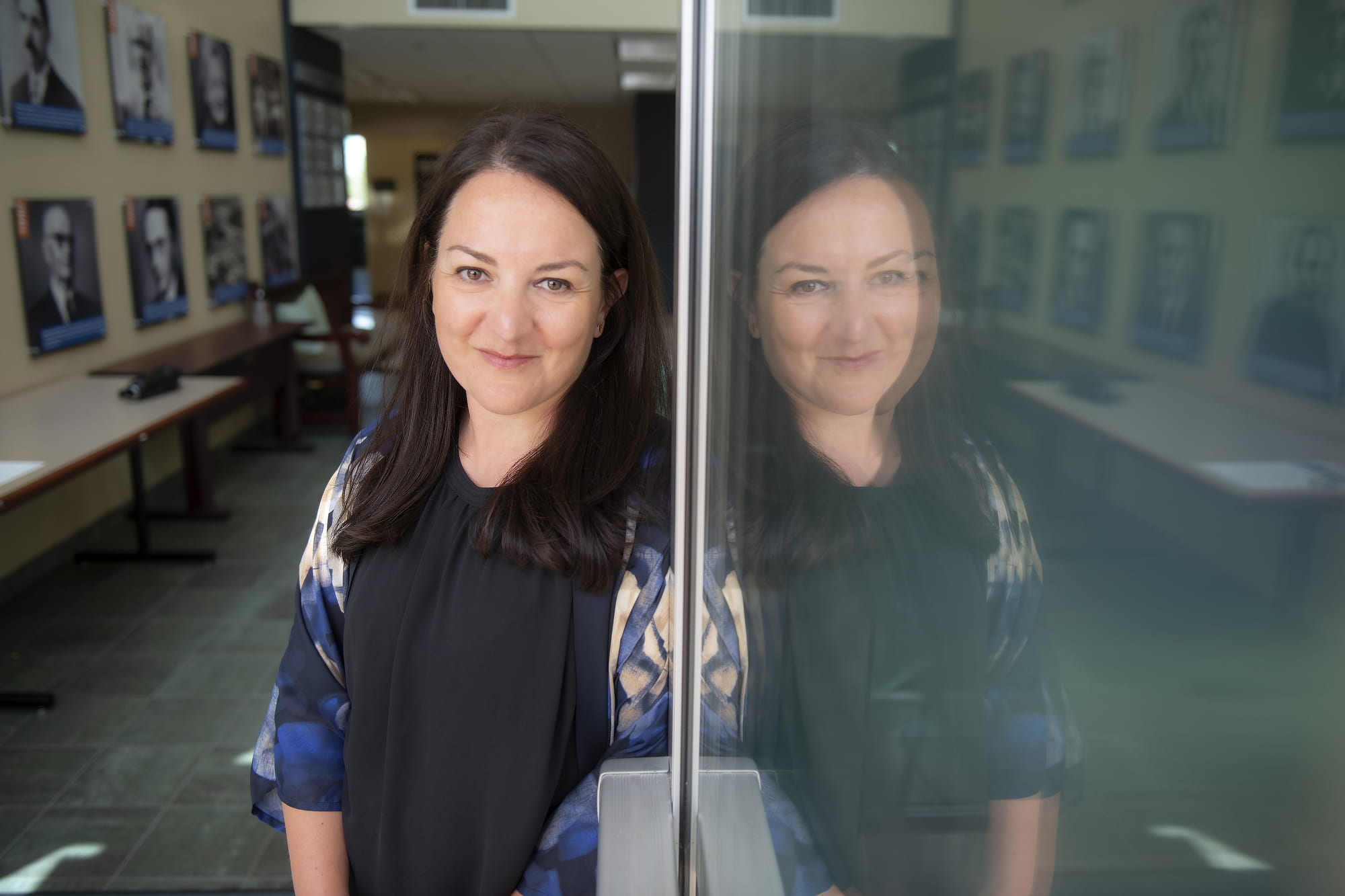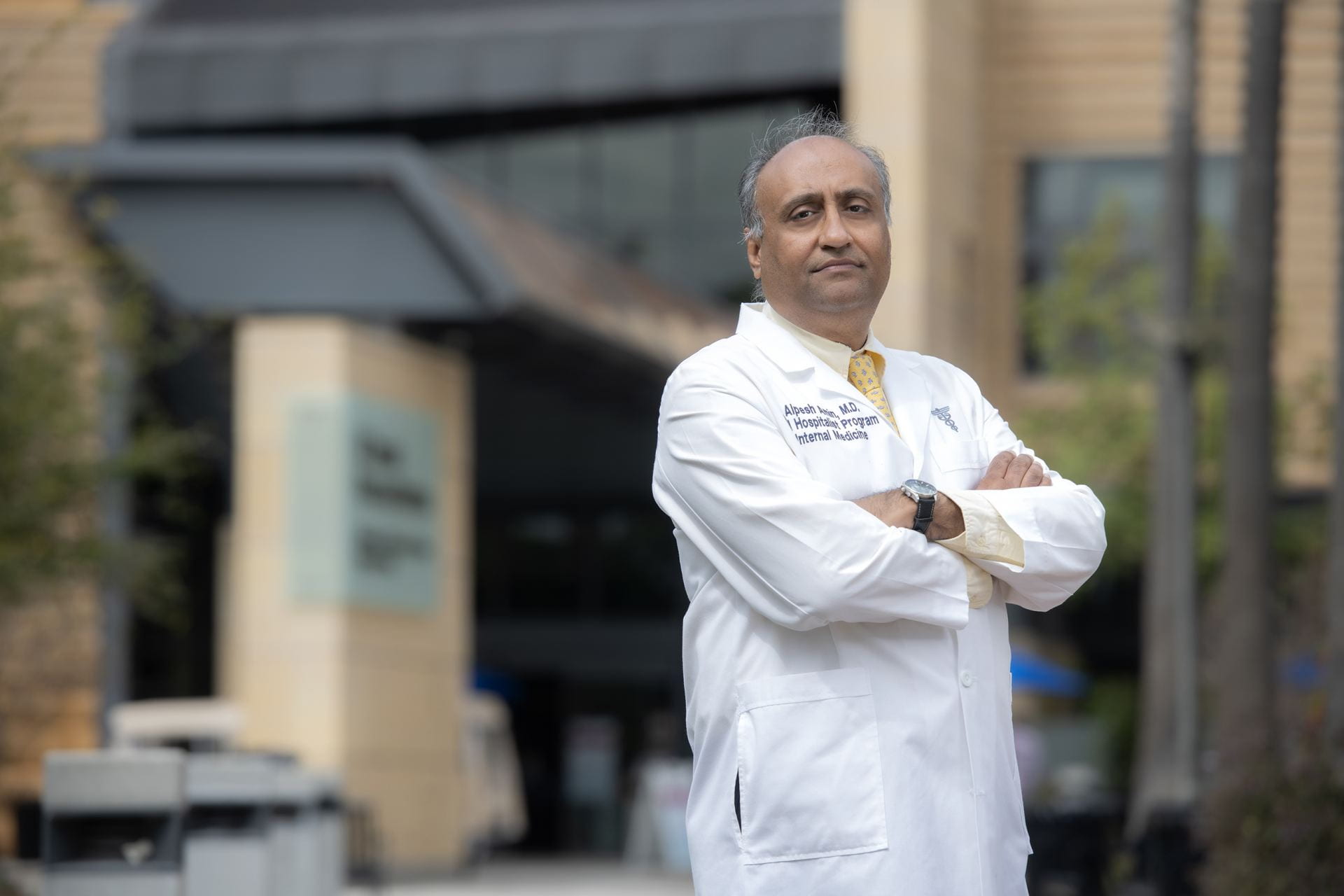Encouraging community access
Sue & Bill Gross Stem Cell Research Center seeks to demystify its work with public lecture series, open houses

When Aileen Anderson became director of UCI’s Sue & Bill Gross Stem Cell Research Center last year, she launched the Community Lecture Series to provide the public a glimpse inside the laboratories and access to the scientists seeking cures for myriad diseases and injuries.
There were concerns that the monthly series, which commenced in June 2018, wouldn’t draw an audience, but within a short time, 70 to 170 people were attending the talks – some due to interest in a specific subject, some who had become loyal followers. Among them were local high school science teachers, who soon began sending their students to the events for extra credit.
“They get to see what a college campus is like, and they get to imagine themselves in the place of these researchers while getting to see what we do,” Anderson says.
During each lecture, a clinician is paired with a basic scientist to discuss the fundamentals of stem cell research and share current information on the state of treatments. Lab tours and demonstrations allow guests to meet the scientists involved and give them a sense of not only what happens in the research labs but what the meaning is behind it.
Anderson believes that interaction with the public breathes new life into her center.
“As scientists, we often get wrapped up in our own highly technical world, whether we’re doing research in the field or teaching undergraduate and graduate students. At a societal level, these outreach events allow us to move forward hand in hand with the communities we serve,” says the acclaimed spinal cord injury and brain trauma researcher.
“Having the space to ask questions helps the public understand some core of the basic science, proper research techniques and how we integrate those methods at UCI. Community members are able to see the status of real-time clinical trials in their area and how those clinical trials can help them.”
Stem cell research has advanced rapidly since 2004, when the California Institute for Regenerative Medicine was created after voters passed Proposition 71, which established $3 billion in state funding to support stem cell research. CIRM remains a major funding source for the field and has underwritten numerous bench-to-bedside projects. There are currently 56 CIRM-supported clinical trials – six at UCI – using stem cells to regrow defective cells and address devastating disorders.
At UCI, stem cell scientists have made key advances in a number of areas. Leslie Thompson is a world leader in using stem cells to potentially treat Huntington’s disease, and Anderson’s research partner, Brian Cummings, is making breakthroughs on therapies for traumatic brain injuries. In addition, a promising treatment for retinitis pigmentosa created by Henry Klassen, director of the retinal regeneration program at UCI’s Gavin Herbert Eye Institute, is currently being tested in two CIRM-supported clinical trials.
“The science will continue, and it will take many different forms, thanks to [state funding] of these projects,” said CIRM President and CEO Maria T. Millan in a Sept. 11 lecture at the UCI School of Medicine.
In advance of Stem Cell Awareness Day, on Oct. 9, the next Community Lecture Series talk and open house at the Sue & Bill Gross Stem Cell Research Center will take place on Tuesday, Sept. 24, starting at 5 p.m. The keynote speakers will be Peter Donovan and Sidney Golub, former directors of the center. Golub is an expert on stem cell and biomedical research ethics and policy.
For more information about the event, see UCI Today or the Sue & Bill Gross Stem Cell Research Center website.


